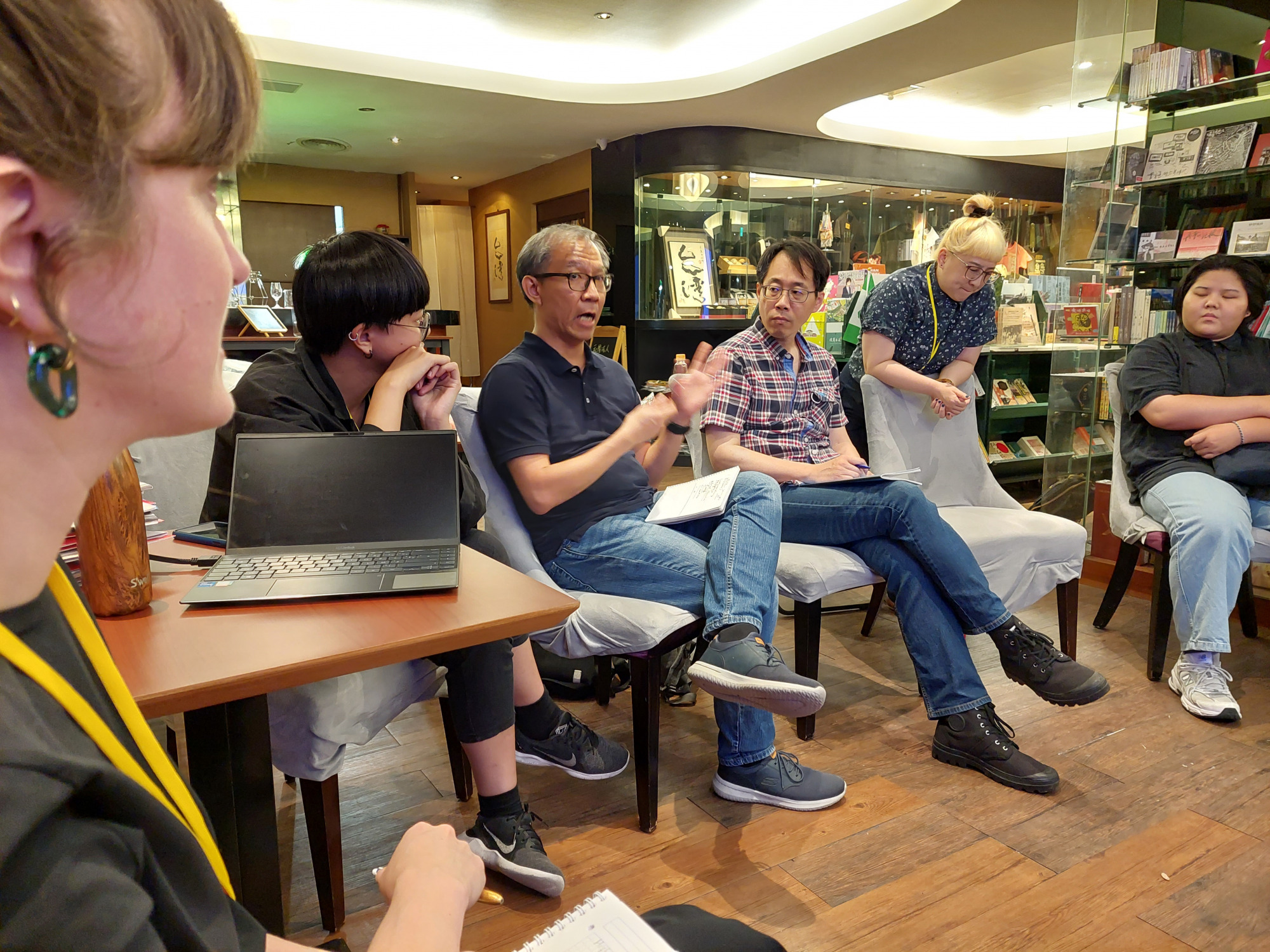Teachers as Intellectuals in the Abolition of the Death Penalty
Author/ Leong Kar Yen (Tamkang University)
As the intense sessions continued in the day, a workshop arranged for the educators in the evening provided a much different perspective. Lasting several hours until the night, the workshop participants came from a diverse group of individuals ranging from elementary school teachers all the way to university professors. With trainers from the French anti-death penalty groups ECPM or Together Against the Death Penalty these educators were given the opportunity to share their experiences with the others within the group.

While abolitionist activism is important in terms of pushing for the end of the death penalty, this session amongst educators revealed a deeper need to engage with the established statist, societal and cultural forces of which the death penalty is a part of. This is essential given that most people not only in retentionist countries but also those who have abolished capital punishment continue to believe that the death penalty is intrinsically bound with culture. Especially in East and Southeast Asia, culture and indeed society demands an “eye for an eye”. Therefore, if this belief in retribution is to change, the drive then must to come from the ‘most’ basic level which is that of education.
Given the decades since Taiwan’s democratisation, there have been some phenomenal changes in its political landscape. In tandem with these changes has been the increasing space within Taiwanese society not only for open discussions but also the breaking of taboos surrounding issues of sexuality. However, the one issue which Taiwan society remains stubbornly steadfast in its support for is the death penalty. Nonetheless the nation’s democratic process has also brought on greater variations especially through the inclusion of human rights within its education curriculum. Students through the civic education are not only taught legal principles but are also given a survey of the travails of Taiwanese democracy and the time the country spent under authoritarian rule. Nevertheless, despite the liberal nature of Taiwanese education, not all teachers adhere to what is prescribed in the textbook, some choosing to ignore or even to skip over the more ‘difficult’ parts of the curriculum. While the reasons for this is varied, there remains this small group of dedicated teachers who are not necessarily pursuing an abolitionist agenda but are also exposing their students to a more humanistic form of education.
As an expanded network of educators who had previously worked with the Taiwan Alliance to End the Death Penalty, these teachers had been exposed to the nuances over the death penalty. While the ECPM model was instructive, what was obvious to me was the fact that these teachers were already equipped with the necessary skills in teaching the touchy subject of the death penalty. Using visual methods and technology, these teachers often spoke of the challenge of dealing with students with short attention span. Using groupwork, these educators we nonetheless able to engage with the students. One fascinating aspect of their teaching methodology were their skills and role in helping their students develop critical skills. This form of humanistic education is very effective in instilling in these young minds the critical faculty to question conventional wisdom. But perhaps what I found most intriguing in their teaching methods was to go beyond the death penalty itself. The death penalty, within their pedagogy was merely a symptom of the afflictions society suffers from. These teachers were able to connect the conversation over capital punishment to issue of inequality, bullying and the systemic violence which creates offenders and possibly death row inmates. This was something which within the scope of my own teaching I fond often difficult to express.

This form of teaching has the powerful potential to conscientize children into recognising for the capital punishment to abolished, that there is a need change society so that there would be no need for punishment and or the death penalty. As I have noted earlier, Taiwanese society continues to support the use of capital punishment despite the gains made in its evolving democracy. One reason for this is the ‘silenced’ nature of Taiwanese society. Throughout the decades of authoritarian rule in Taiwan, specifically during the ‘White Terror’ period, the regime’s power lay in its ‘necro-governmentality’, or simply its ability to give or to take life. To survive under the awesome power of the state, citizens had to acquiesce and remained ‘silent’ as a survival tactic. Over the decades this power remained ‘organically’ with the state and in the case of the death penalty, even after democratisation.
By engaging students in a conversation over this thorny topic, a process of taboo breaking is taking place. This is similar to TAEDP’s series of ‘roadshows’ organised in the past, which had the culminating effect of forcing an audience in several cities to confront the realities of the death penalty. But on the other hand, these teachers have already been successful in doing so. Having these teachers as guides, the students are ‘gifted’ that opportunity to break away from Taiwan’s authoritarian past. At the same time, they are also able to navigate a media saturated environment with greater critical clarity. As one scholar states, “…the death penalty evokes our deepest human sentiments, primarily because it touches on issues of life and death, crime and punishment, justice and order—matters that are of vital significance” (Patenaude 2001: 406). Therefore teaching the death penalty can, “…enrich the classroom by sharpening students’ awareness of current legal, political and philosophical issues” (2001: 406).
The number of teachers appearing at the session was small but their presence showcased the possibilities in terms of teaching abolitionism. Perhaps what is more important is recognition that these teachers should also be seen as ‘intellectuals’ engaged in changing the attitudes the society hold towards the retention of the death penalty. What needs to be done now is to engage further with this teachers and provide the necessary space for them to further develop their capacity for humanistic education. This is not something ‘normal’ methods in teaching can bring about. What needs to happen is the creation of environment where these teachers and given the necessary encouragement, tool box a community of which they can share their experiences and best practises.
Bibliography
Patenaude, Alan (2001) “May God have mercy on your soul: Exploring and Teaching a Course on the death penalty” Journal of Criminal Justice Education Vol. 12 No. 2 Pp. 405-425


